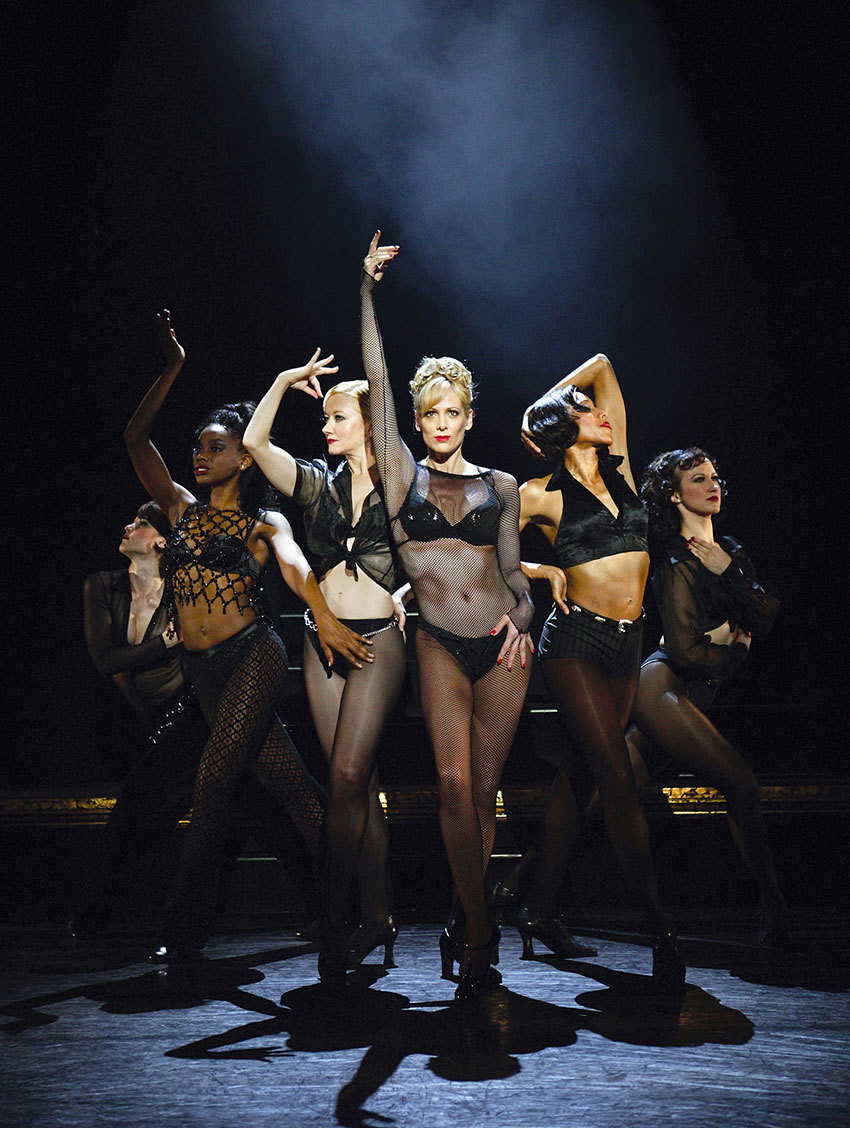Review: CHICAGO Rocks Sioux Falls
|

The Washington Pavilion was filled with razzle and dazzle Tuesday night as Chicago made its latest tour stop in Sioux Falls, SD as part of its 20th anniversary tour. I've been waiting for this show since it was announced almost a year ago, and it did not disappoint! This production is filled with sassy women, biting humor, and enough razzle dazzle to leave audiences wanting more.
Set in prohibition-era Chicago, Chicago starts off with a bang - literally. In the midst of the lively opening number, All That Jazz, Roxie Hart shoots her lover Fred Casely (Michal Kolaczkowski) and kick starts the story of her rise and fall as a media darling murderess during the Jazz age.
The original Broadway production, with book by Fred Ebb and Bob Fosse, opened in 1975. In addition to writing the book Fosse choreographed the show, cementing Chicago as the signature Fosse musical thanks to the distinct use of turned-in knees, sideways shuffling, rolled shoulders, and meticulous isolations throughout each dance number. Even if you don't know these movements to have been pioneered by Fosse, it is impossible to ignore the impact that they have on setting the tone of the show. Since its debut, Chicago has gone on to hold the record for longest running American musical in Broadway history with its 1996 revival. That revival also went on to receive the 1997 Tony for Best Revival of a Musical, and the 2002 film version won the Academy Award for Best Picture.
Several cast members return to roles in this production of Chicago, including leads Dylis Croman (Roxie Hart) and Terra C. MacLeod (Velma Kelly), bringing with them a familiarity and excitement for their characters. Throughout the show, MacLeod expertly conveys the desperation of Velma Kelly as she watches Roxie go from media revival to finally convincing her to become the other half of her double act. One of MacLeod's strongest scenes is during the Act 2 duet, Class, between her and Jennifer Fouché's Matron Mama Mortan; beautifully capturing the strong on stage chemistry between the two.
While Paul Vogt's character Amos may feel like he goes unnoticed, the same cannot be said of Vogt's performance. He continually conveys the simple innocence and naïve humor of Amos throughout the show - from his solo number Mr. Cellophane to his final denied request for exit music you definitely notice him.
The solo numbers in this show move the story along, but the ensemble numbers bring the show to another level. This production really shines when the entire cast is on stage together. The isolations are sharper, the songs are richer, and everything is more captivating.
With each number modeled after a traditional vaudeville number or performer, John Kander and Fred Ebb's (CABARET) music and lyrics truly set the tone for this show. When I walked into the theater the first thing that caught my eye was that they were seating people in the orchestra pit. As the curtain rose, I understood why; the orchestra was front and center on a stage where they actually took up most of the stage itself. As the show progressed this staging move excited me more and more, with characters continually interacting with maestro Robert Billig, and using the orchestra box as an integral piece of the set design through trap doors and additional entry/exit points.
Not only did the staging put these talented musicians on display, it presented a challenge of how to convey changing scenes without the use of traditional set pieces or backdrops. This challenge is successfully met by Ken Billington's use of lighting as an effective means of telling the story. Scenes set in the jail house for instance are defined by the shadow streaked stage floor that mimics that of the shadows cast by cell bars in a prison. When Roxie and Amos speak about how to pay lawyer Billy Flynn the divided floor spots give the illusion that they are speaking from different sides of a glass wall. In contrast, the dream sequences are colorful and lively, clearly setting the scenes apart from reality. All of these details added to the production in meaningful ways for me.
Having come in with high expectations, I walked away fully satisfied by this production of Chicago. I was captivated by familiar music, including my favorite number Cell Block Tango; I laughed at the often outrageous and unexpected humor of the courtroom scene; and I left ready to paint the town and all that jazz.
_______________________
Follow Katie on Twitter @KBeckerBWW for all things theater in Sioux Falls.
Photo Credit: Paul Kolnik
Videos

